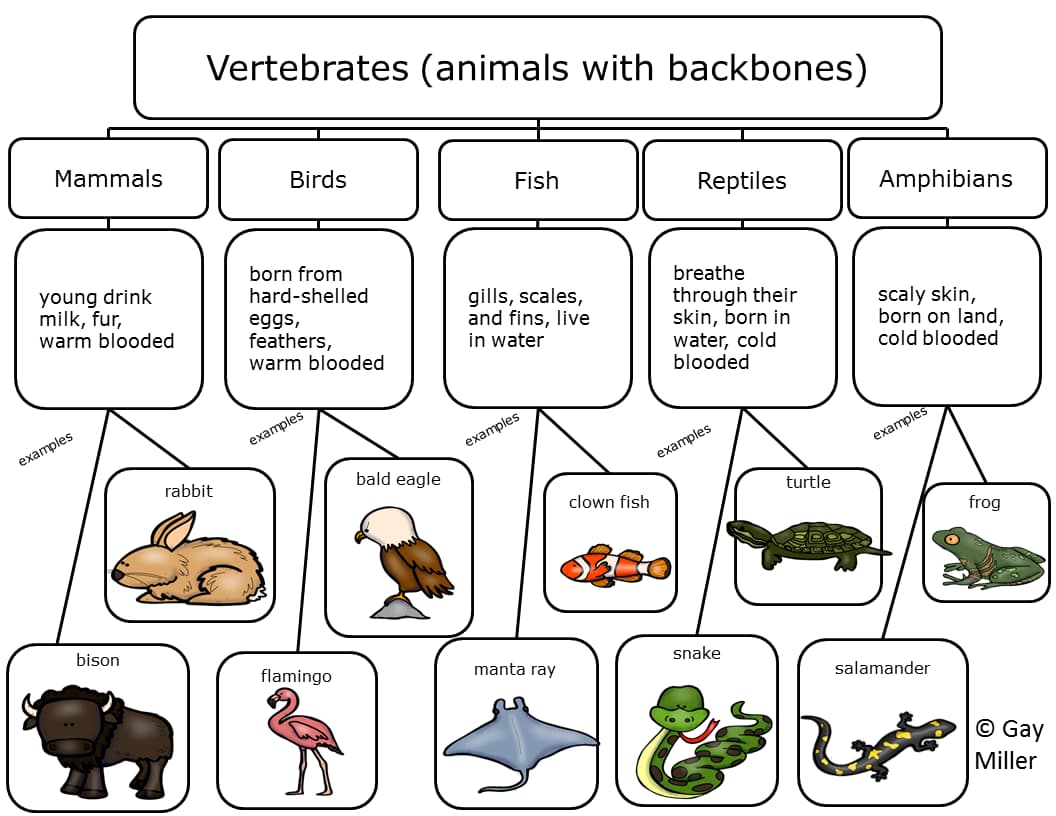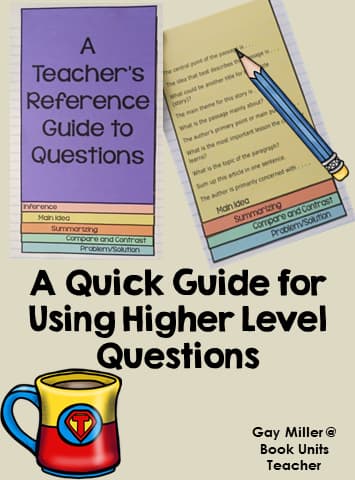
Educational trends change almost yearly. One year ‘this method’ is the best thing ever invented. The following year ‘this method’ has lost its appeal, and a new idea is a must-try. However, the one trend that has remained constant year after year is higher-order thinking skills (HOTS). HOTS encourages learners to go far beyond the memorization of facts. Students analyze, evaluate, and create. So, where do you begin? First, help students understand what HOTS is.
You can download the organizer here.
What are Higher-Order Thinking Skills?
Bloom’s Taxonomy is as popular today as it was when Benjamin Bloom created the method in 1965. Teach students the six levels of Bloom’s Taxonomy. Also, go over what each level means.

The cognitive part has six levels: knowledge, comprehension, application, analysis, synthesis, and evaluation. Each level shows a different kind of understanding or thinking skill that learners can show.
For example, at the knowledge level, learners can remember facts or terms; at the comprehension level, they can explain or summarize ideas; at the application level, they can use knowledge to solve problems; at the analysis level, they can break down information into parts and relationships; at the synthesis level, they can make something new from existing elements; and at the evaluation level, they can judge the value or quality of something based on criteria.
In 2001, a new cognitive part was published with changes in the levels’ names and order: remember, understand, apply, analyze, evaluate, and create. The new version also stressed the dynamic and connected nature of cognitive processes.
Activities for Higher-Order Thinking Skills

Have students make connections with their current knowledge and new concepts. Check out this post. It is the first of three lessons on teaching ‘Making Connections with Text.’ Best of all, free printables are included.
Use Photos
Have students make inferences using photos. When beginning, real-life examples are easier to understand. National Geographic’s “Photo of the Day” is a great place to get interesting photos. This link goes to the National Geographic Chrome Extension. After you download the app, two weeks of photos become your wallpaper. These change daily to the most current selections.
Use Graphic Organizers
Who doesn’t love interactive notebooks? Organizers help in many ways. Firstly, they encourage students to categorize concepts. Additionally, organizers classify ideas. Use organizers as a springboard for brainstorming. Moreover, they help students find relationships between topics—organizers structure information before writing.
Use the provided printable or digital options. Now digital versions are available for hundreds of resources.
Concept Maps

Concept maps are a method that helps students organize and visualize information by showing the relationships between different concepts or ideas. Students use the organizers to summarize data, make connections between ideas, and understand complex topics.
To create a concept map, students start by identifying the main idea or topic in the center of the map and then adding related subtopics or concepts around it. Students connect each subtopic to the main idea with a line, and students can add more lines to connect related concepts.
For example, students can use concept maps to visualize cause-and-effect connections, define the main idea and details, or sequence events. Concept maps can help students learn from various sources, such as textbooks, lectures, or research. They can also help students brainstorm ideas for writing assignments or projects. Concept maps allow students to see how different ideas are connected and more easily remember and understand the information.
Expand Answers
Students often take shortcuts with answering questions. Encourage students to elaborate. This can be done by having students organize information before writing. Lists will guide students into more detailed responses.
Next, ask students to go a step further. Students can relate their answers to personal experiences. Another higher-level question is to explain future applications.
Use the Here, Hidden, Head, Heart Method of Questioning

When questioning students, go from basic to complicated. David Hornsby created this method to help students understand levels of comprehension. This alliteration makes remembering the levels fun and easy.
The Here, Hidden, Head, Heart Method of Questioning is a framework used to guide student thinking and questioning. Each of the four H’s represents a different type of question:
Here: Questions about the facts or details of a topic. These questions help students establish a foundation of knowledge and understanding of discussion topics.
Example: What is the name of the largest ocean on Earth?
Hidden: Questions encouraging students to look beyond the surface and uncover deeper meanings or connections. These questions help students make connections between different ideas and concepts.
Example: Why do you think some animals are only found in certain parts of the world?
Head: Questions that require critical thinking and problem-solving skills. These questions help students analyze information and draw conclusions.
Example: What might happen if we continue to use fossil fuels at the current rate?
Heart: Questions that encourage students to reflect on their emotions and values. These questions help students connect their experiences and perspectives to the discussed topic.
Example: How do you feel about the impact of pollution on the environment?
Teachers can use the Here, Hidden, Head, Heart Method of Questioning to help students develop a deeper understanding of a topic and make meaningful connections between different ideas.
Problem-Solving
When possible, have students use step-by-step problem-solving strategies. This encourages higher-level thinking. Also, have students develop different methods for solving the same problem.
Projects
Assign projects that include creative higher-level tasks. This includes inventing, imagining, and designing.
Home Discussions
Provide questions for students to talk over with their parents.
- Should the school have a dress code?
- What do you think of this world event?
- What should our town do about this local issue?
- How can we make a difference in our community with …?
Learning Styles
Give students a learning styles questionnaire. Here is one to try. This link downloads a DOC file.
Student Partners
Pair a student who prefers “tell me” with a student who prefers “show me.” This pairing connects visually with verbal learners. As the two work together, each student will model examples to strengthen his/her partner’s weaknesses.
Cooperative Learning Groups
Group students into learning groups by mixed abilities.
Reward Creative Thinking
When students provide “out of the box” answers, PRAISE. PRAISE. PRAISE.
A Teacher’s Reference Guide To Questions
This organizer provides a quick reference for teachers to develop higher-level questions on the fly. The staggered flip organizer is divided into five areas teachers use in reading class. The organizer includes
- inference
- main idea
- summarizing
- compare and contrast
- problem/solution

To improve your level of questions, use this simple yet effective staggered flip organizer. Each page provides example questions that could be asked during a lesson. Glue the organizer on the inside front cover of your grade book. Use the organizer as a reference to ask higher-level questions during class quickly. After a short while, using a variety of questions became automatic.
You can download the organizer here.



5 comments
Skip to comment form
Hi Gay,
I am wondering if you still have the Quick Guide to using higher level questions available for download?
I really like your website and availability of materials. I thank you for many free resources. I am sure you know it adds up to pay for so many things. I am also looking for the download for the SWBST graphic organizer for summarizing.
Thank you so much,
Carol
Happy Holidays! 2015
Author
I just checked. The link works, but it is difficult to find. Click on the last word of the post “here.”
Hello! I was really excited to find this until the link didn’t work :'( Is there another location I could find it?
Thanks,
Caroline
Oh! Never mind! I was opening it from Pinterest and it just needed to be opened from a browser.
Author
I’m glad you figured it out.